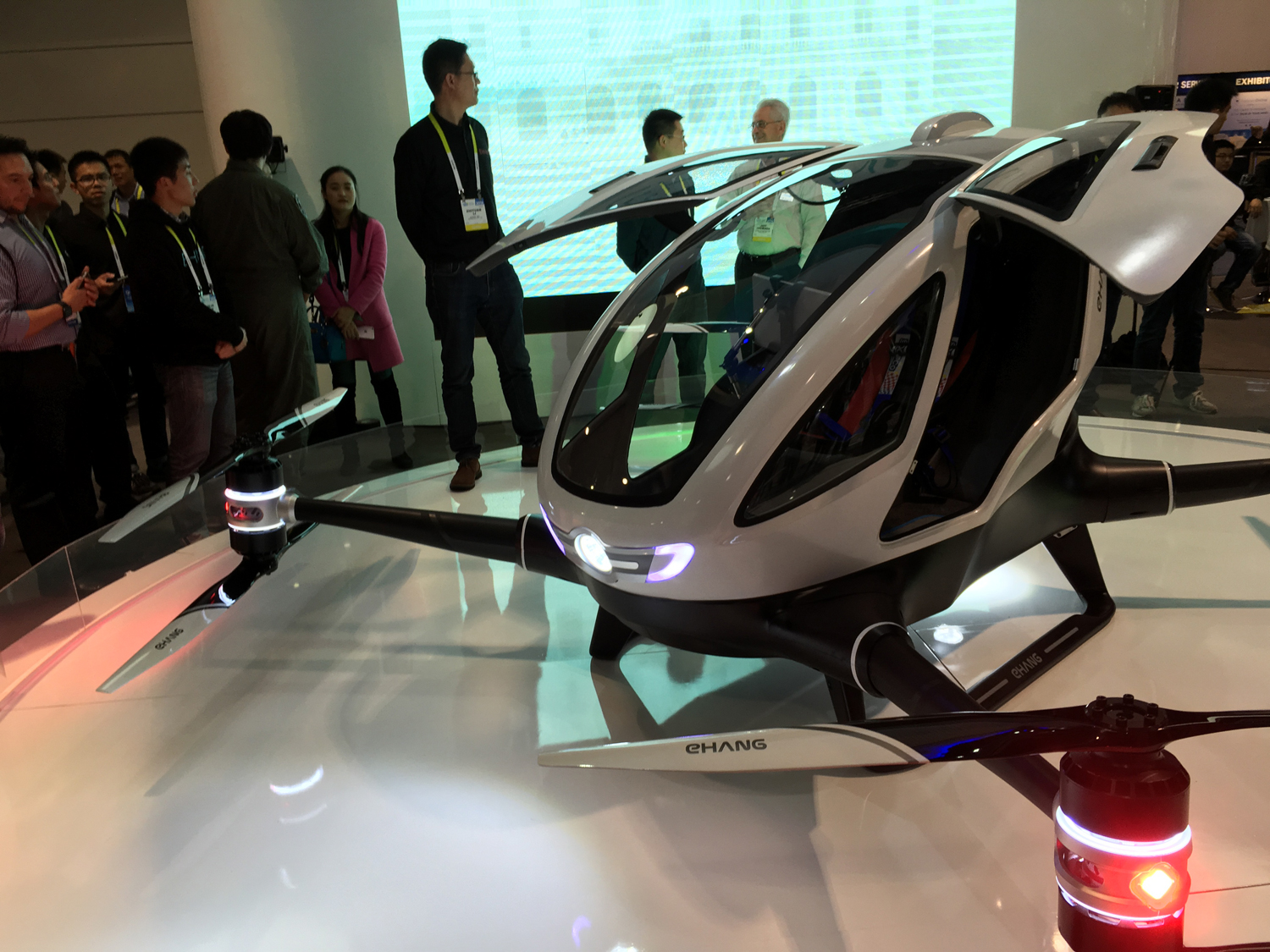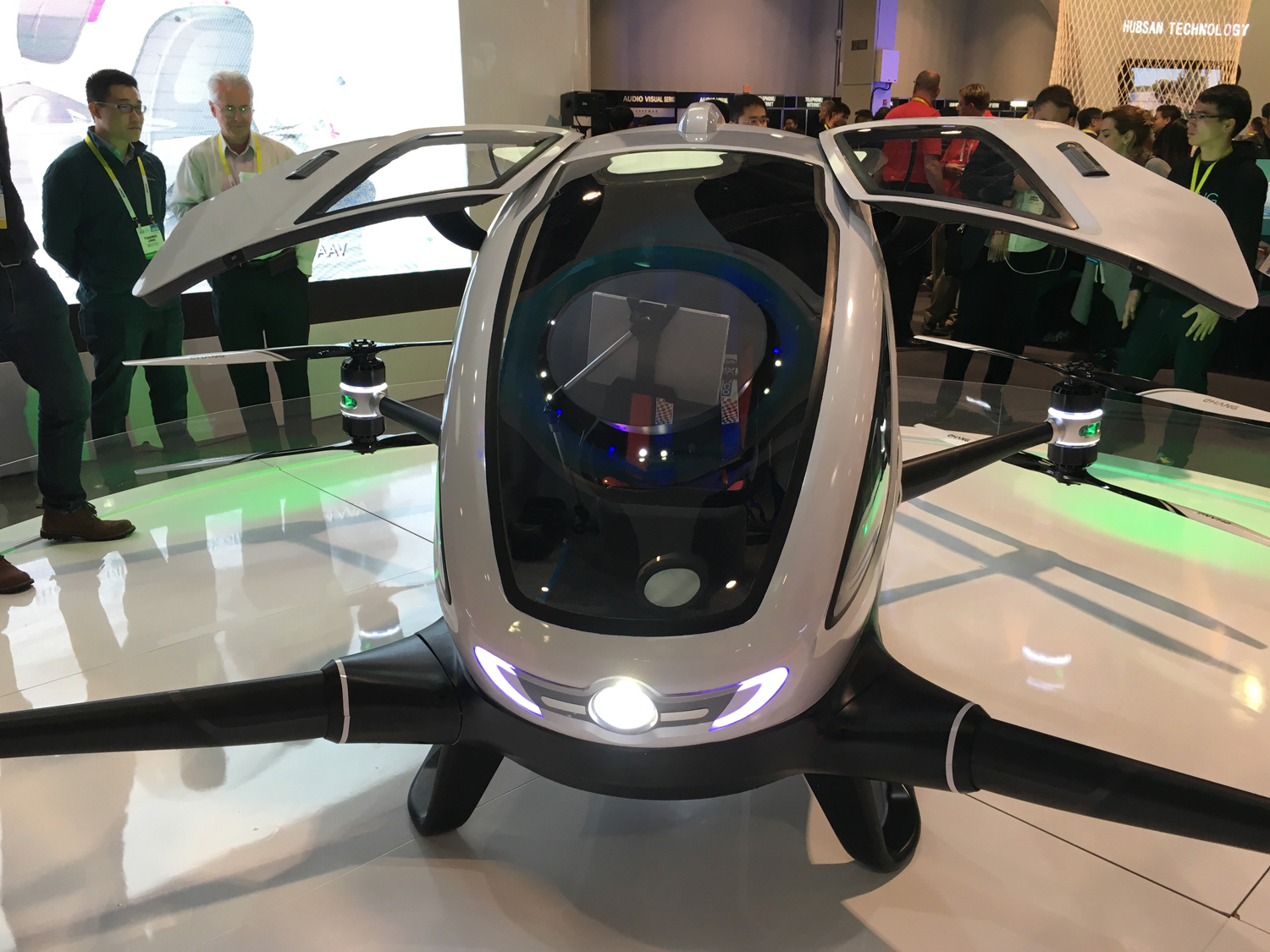eHang's Far-Out Passenger Drone: Will It Ever Take Off?
The eHang 184 is a huge drone with a passenger seat, and its unveiling raised many questions -- such as how it could ever be legal to fly.
LAS VEGAS — If you've recently looked at a calendar and muttered, "It's 2016. Where the heck are the flying cars?", then drone maker eHang has a response for you: Here they are.

Well, the eHang 184 is not exactly a flying car. The Chinese company calls the 184 an "autonomous aerial vehicle." Think of it as a drone with a passenger seat. You sit down, program in the location to which you want to go, and relax for the duration of your 28-minute flight as you leave the piloting and navigation to the autopilot — if you can truly relax in an airborne vehicle that's flying on its own.
MORE: What's Next for Drones: Super Selfies, GoPro Karma and Fuel Cells?
eHang took the wraps off its pilotless passenger vehicle at CES 2016 Wednesday (Jan. 6), during a press conference that seemingly raised more questions than answers. The chief question was: "Is this even legal?"
An eHang spokesperson told me the 184 is ready to be commercialized pending regulatory approvals, and at least one company executive said the product would be ready in 2016. That seems like a fairly optimistic timetable, given that our streets aren't exactly jammed with driverless cars, unless you happen to be reading this from the Google campus.
If the 184 ever makes it to market — and you can carve that "if" in giant stone letters that weigh as much as 441-pound self-piloting vehicle — be prepared for a six-figure dent in your bank account. eHang representatives quoted a price range between $200,000 and $300,000.

eHang did bring a prototype to the show floor, and it's an impressive-looking craft. The 184 has four arms shooting out from its cockpit, with two rotors attached to the top and bottom of each arm. There's a lone passenger seat in the cockpit, with a 12-inch control pad for entering in your flight plan. The electric-powered vehicle is just under 5 feet tall, and the spec sheet for the 184 says it can carry a load of 120 kilograms, or 264 pounds.
In this case, seeing is not necessarily believing, especially since the 184 remained rooted to the ground at CES. (To be fair, eHang executives say the 184 has done 100 test flights in China.) Apart from satisfying those tricky FAA regulations, eHang will also have to alleviate concerns about the safety of getting into an unpiloted aircraft.
The company's press materials note that the 184 has multiple backups should any part fail during flight, and a fail-safe system can determine if the drone needs to make a sudden landing. But there are some lingering questions about what would happen if there was an unexpected power line or other obstacle in the 184's path. The company needs to spend more time addressing those.
eHang is not exactly a fly-by-night operation. It's the company behind the Ghost drone, which is now in its second iteration. Still, it's safe to say that creating a much larger drone, with a passenger seat to boot, is a much trickier task. No matter whether the eHang 184 takes off, or instead slides into the vast hangar of CES vaporware, the flight path over the next few months should be interesting.
Sign up to get the BEST of Tom's Guide direct to your inbox.
Get instant access to breaking news, the hottest reviews, great deals and helpful tips.
Philip Michaels is a Managing Editor at Tom's Guide. He's been covering personal technology since 1999 and was in the building when Steve Jobs showed off the iPhone for the first time. He's been evaluating smartphones since that first iPhone debuted in 2007, and he's been following phone carriers and smartphone plans since 2015. He has strong opinions about Apple, the Oakland Athletics, old movies and proper butchery techniques. Follow him at @PhilipMichaels.

